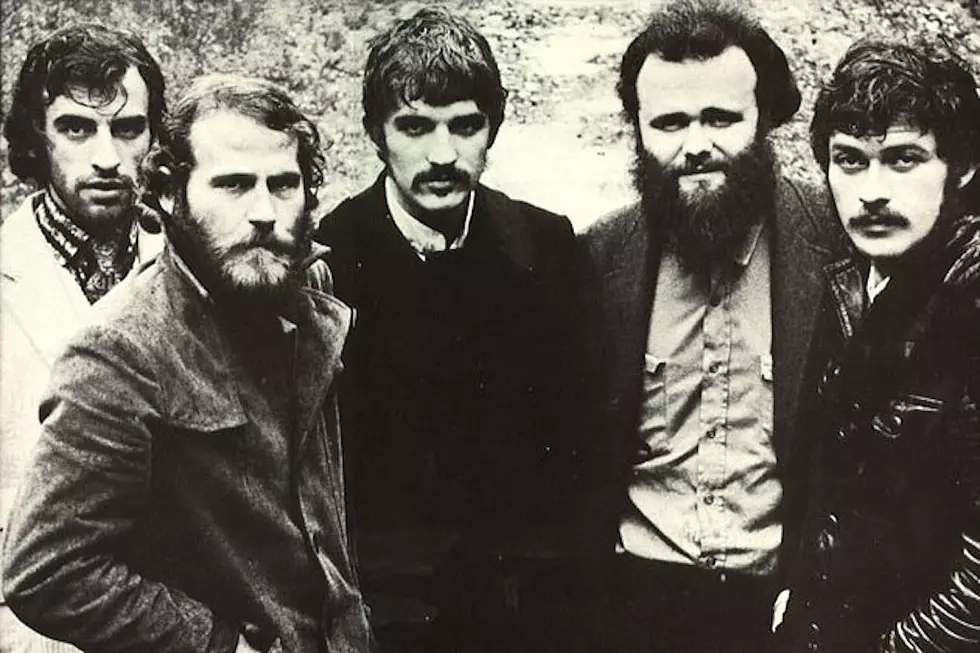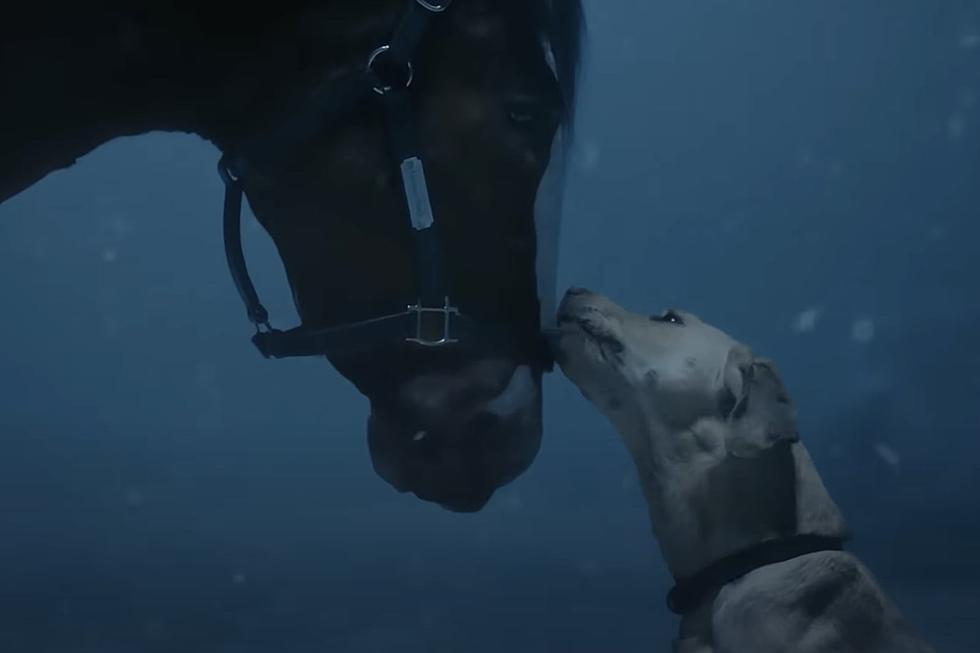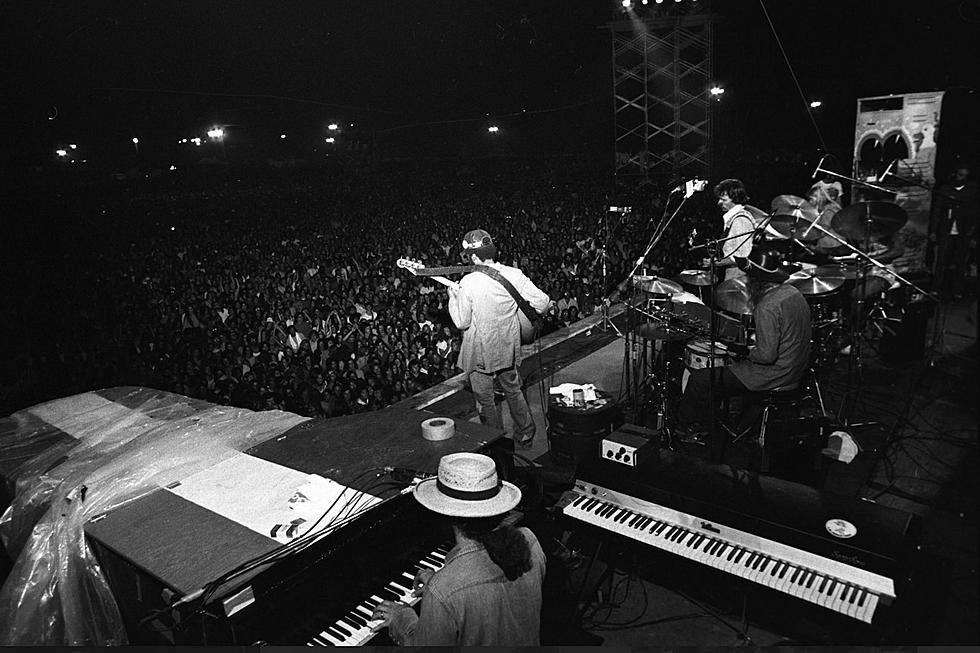
How the Band’s Self-Titled Second LP Dug Up Americana Roots
The rustic Americana that the Band had rubbed up against on their 1968 debut album Music From Big Pink was just the start. Assembled while the group holed up in their home near Woodstock, N.Y., with their former boss Bob Dylan, but recorded in studios in New York and Los Angeles, the album was on the cusp of a new roots-oriented movement in rock music.
Dylan himself stripped down and twanged up on 1967's John Wesley Harding, spurred by his "Basement Tapes" collaboration with the then-unnamed Band earlier in the year. And Dylan disciples the Byrds, after toying with the genre around the same time, steered straight into roots country on 1968's Sweetheart of the Rodeo.
But neither of those records could compare with the Band's self-titled, second album from 1969. From its iconic cover photo – a sepia-toned pic that looked like something Matthew Brady shot – to the themes of the songs contained inside: One way or another, they all led back to the year 1865 or so. The Band marked a pivotal moment in rock music: the time it grew up by looking back.
Oddly enough, the Old South thread that runs through the album's music and lyrics was made by a group of mostly Canadians and recorded in West Hollywood. It's a testament to the Band's individual members – Rick Danko, Levon Helm, Garth Hudson, Richard Manuel and Robbie Robertson – and their ability to play everything from fiddle and mandolin to trombone and accordion that makes The Band sound so genuine. If you didn't know better, you'd swear these guys' ancestors were Civil War vets or maybe even soldiers, cryogenically preserved from 100 years earlier.
That dusty authenticity runs through the songs. "Up on Cripple Creek." "Rag Mama Rag." "The Night They Drove Old Dixie Down." It's the sound of America coming together, falling apart and picking up the pieces. If there were ties to what was going on in the U.S. at the time – and you can be sure The Band was a nostalgic reaction to such conflicts – they were buried beneath layers of dirt.
Listen to the Band's 'The Night They Drove Old Dixie Down'
Producer John Simon, who also worked on Music From Big Pink and helped the Band shape their sound on their first two albums, coats The Band in a type of sonic sepia to match that famous cover photo. There's nothing modern about it. While the album doesn't exactly sound like Harry Smith's legendary field recordings of folksingers from decades before, there's enough rustic grit running through its grooves to call attention to the thought that they probably weren't too far from Simon's mind.
The horn arrangements – particularly on the eternal "The Night They Drove Old Dixie Down," hands down the best rock song ever written about the Civil War, and a history lesson as vivid and as exciting as anything Ken Burns delivered – come off like wounded battle cries (the members of the Band performed many of the horn parts on the record, even though Hudson was the only one who actually knew how to play the instruments). The fiddles, mandolins and acoustic guitars echo Saturday-night barn dances played by semi-amateurs. And the voices carry the weight of too much hardship and loss over too short a period of time.
There would never be another album quite like The Band. Certainly not from the group itself, which returned the following year with Stage Fright, a relatively more modern record that reflected the Band's battles with fame, despair and isolation. (It's no surprise, listening to the record, that Manuel's and Danko's lives were cut short by suicide and heart failure after years of drug and alcohol abuse, respectively.)
Music From Big Pink and The Band closed a chapter on the group's history. While neither album would spawn a huge hit single, "Up on Cripple Creek" did manage to climb to No. 25, their best-ever showing on the singles chart. The Band, however, made it to No. 9 and eventually went platinum – their biggest-selling album (Music From Big Pink stalled at No. 30 and went gold; Stage Fright made it to No. 5, and the live album, Rock of Ages, reached No. 6 in 1972).
But the group's legacy, especially the wasted battlefields and down-home rambles of The Band, has influenced countless artists since the album's release – from the Eagles' genre-shifting country-rock to the alt-country heyday of Ryan Adams to anyone who tosses a mandolin, accordion or any other old-school front-porch instrument into their music these days.
Traces of the scarred South may not have been cut into the five members' DNAs, but they sure played like it did. And nobody's come close to kicking up a storm that sounds anything like it since.
The Most Awesome Live Album From Every Rock Legend
See Levon Helm in 25 Interesting Rock Movie Facts
More From Ultimate Classic Rock









